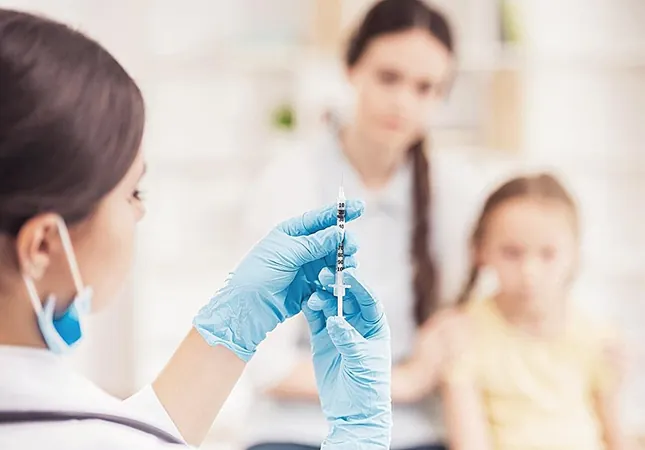
Alarming Decline in Childhood Vaccinations Post-Pandemic: Are We Doing Enough?
2024-11-01
Author: Sarah
Post-Pandemic Vaccination Trends
A new study published in the latest issue of the U.S. Centers for Disease Control and Prevention's Morbidity and Mortality Weekly Report has unveiled a troubling trend: childhood vaccination coverage around the world has not yet bounced back from the setbacks caused by the COVID-19 pandemic.
Study Overview
Led by Dr. Camille E. Jones and her research team at the CDC in Atlanta, the investigation analyzed vaccination coverage data from 194 World Health Organization (WHO) member countries through 2023, painting a grim picture of immunization efforts. The study highlights that global coverage for critical vaccines, such as the first and third doses of the diphtheria-tetanus-pertussis vaccine (DTPcv) has stagnated at 89% and 84% respectively, while the first dose of the measles-containing vaccine lingers at a troubling rate of just 83%. Alarmingly, these figures are still significantly lower than pre-pandemic levels.
Impact on Vulnerable Populations
A staggering revelation from the findings is that nearly half of the 14.5 million children who missed their first DTPcv dose are located in 31 WHO member countries characterized as fragile, conflict-affected, and vulnerable (FCV) settings. These regions are particularly at risk, and the need for immediate interventions to bolster immunization programs is crucial.
Current Efforts and Challenges
While efforts have been made to mitigate these declines, including the introduction of new and underutilized vaccines such as a second dose of the measles vaccine in Africa, the overall protection against vaccine-preventable diseases remains compromised. The pandemic's disruptions highlighted and intensified existing inequalities within health systems, leading to new gaps in vaccination coverage that continue to affect global health outcomes.
Call to Action
“The COVID-19 pandemic-associated disruptions in health systems augmented existing gaps and introduced new gaps in immunization coverage worldwide," the authors noted. "Progress toward recovery has been uneven across countries, with low-income nations, particularly in the African region and FCV settings, facing the most pressing need for action.”
Conclusion
As countries strive for recovery, it is imperative for governments, international organizations, and local health systems to collaborate effectively to reverse this trend. Experts warn that failing to address these vaccination gaps could result in outbreaks of preventable diseases, posing a serious risk to child health globally. How much longer can we afford to ignore this critical issue? The world is watching, and the time for action is now!




 Brasil (PT)
Brasil (PT)
 Canada (EN)
Canada (EN)
 Chile (ES)
Chile (ES)
 España (ES)
España (ES)
 France (FR)
France (FR)
 Hong Kong (EN)
Hong Kong (EN)
 Italia (IT)
Italia (IT)
 日本 (JA)
日本 (JA)
 Magyarország (HU)
Magyarország (HU)
 Norge (NO)
Norge (NO)
 Polska (PL)
Polska (PL)
 Schweiz (DE)
Schweiz (DE)
 Singapore (EN)
Singapore (EN)
 Sverige (SV)
Sverige (SV)
 Suomi (FI)
Suomi (FI)
 Türkiye (TR)
Türkiye (TR)